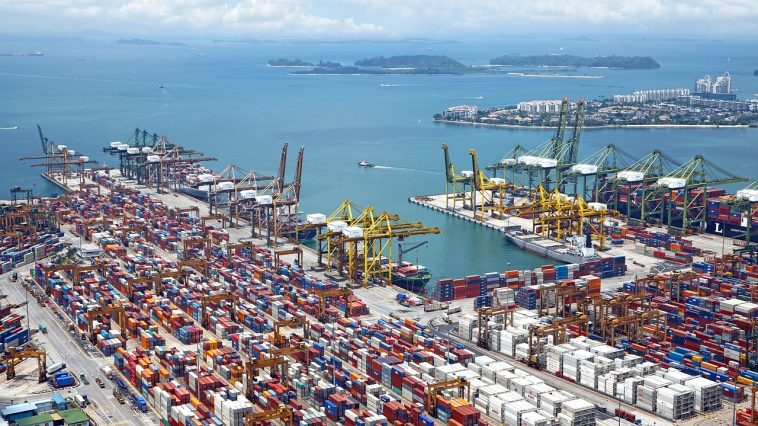In the coming years, the logistics industry can expect many trends to arise from both the supply and demand sides. For example, the growing demand for e-commerce will push companies to improve their last-mile delivery systems.
Automation will also see more prevalence. With drones, autonomous cars, and robots improving in technology, logistics companies will likely utilize automation to streamline systems and reduce costs. Related to this is the importance of digitization, which provides many opportunities for logistics service providers (LSPs) to improve customer service.
The logistics industry plays a vital role in the global economy, as it is responsible for the transportation and distribution of goods worldwide. Shipping companies must overcome new and old challenges to reach their full potential this year and beyond.
7 Challenges for the Cargo Transportation Industry in 2023
LSPs are currently facing many challenges that are affecting their efficiency and profitability. These challenges encompass everything from worker shortage to complex government requirements. This article lists more problems, and potential solutions carriers can use to overcome them.
Worker shortage
The logistics industry has always suffered from worker shortages. In the United States alone, there are over 5 million job openings in the logistics industry, and it’s understandable why.
People working in delivery have extended hours, often going for days or weeks without seeing their families. Additionally, worker safety is a concern, with the transportation and storage industry having one of the highest rates of injury in all sectors.
These two issues are exacerbated by the COVID-19 pandemic, with international shipping workers requiring isolation periods between shipments and logistics being a vector for the disease to spread.
While transportation will always take time, LSPs can use mass data analysis tools to optimize their routes and reduce the required hours for workers. To complement this, proper training paired with automation of goods-handling tasks can reduce workplace injury.
Environmental regulations
The world is clamping down on greenhouse gas emissions to slow climate change to manageable levels. Organizations are placing a lot of regulations on the logistics and transportation industry, as it accounted for 37% of global emissions in 2022.
One such regulation is the 2020 rule on the sulfur used in fuel oil by ships. The previous limit was 3.5% m/m (mass by mass), which regulators lowered to 0.5% m/m. This change made it necessary for many shipping companies to adapt their fleet to take more expensive fuels. Regulations like these are increasing costs across all delivery avenues.
While expensive and inconvenient, environmental regulations help everyone in the long term. Transportation is heavily dependent on accurate weather predictions, which are becoming more challenging due to climate change’s effects. It’s best for LSPs to “bite the bullet” and convert to greener alternatives to future-proof their fleets from any stricter rules.
Rising gas prices
Gas prices have always been volatile. However, with the turmoil in Ukraine and general inflation, prices have never been higher. High gas prices are bad for everyone – all transportation and traveling lanes become more expensive, causing delays in all levels of the supply chain.
Consumers also face higher travel fees, encouraging them to stay at home and increasing their demand for physical goods. This shift, in turn, further increases demand for deliveries, which might not be profitable for LSPs due to higher expenses.
Thankfully, technology can mitigate some of the adverse effects. Thanks to advancements in data analysis tools and automation software, optimizing routes and scheduling is now possible. These advancements allow LSPs to choose paths that will enable them to move more products while consuming less fuel.
Additionally, researchers are continuously developing fossil fuel alternatives to be more cost-effective and easier to produce. Alternative fuels combined with route optimization can help the logistics industry say goodbye to volatile gas prices for good.
Complex government requirements
Route planning is already complex, with planners already considering weather patterns, road and ocean conditions, and traffic. On top of this, international deliveries require a deep understanding of the bureaucratic intricacies of each stop.
Governments create new zoning laws, anchoring and landing fees, and other sorts of red tape every day, which can delay or discourage international shippers. Digital advancements should quickly solve the glaring inefficiency in information transfer across borders.
Organizations need to publish their information in an easily accessible location as quickly as possible so that LSPs can use tools to collate and organize the information. Clear, updated guidelines from each port of call can reduce the headache government red tape brings and improve delivery times globally.
Shipping container shortage
The pandemic caused a rapid shift in purchasing patterns as people sought to make their enforced isolation as comfortable as possible. The demand for physical goods soared along with a corresponding increase in shipping container demand. Shipping rates from China and the United States West Coast went up 228% compared to pre-pandemic levels.
The extreme demand also heavily bottlenecked the consumer end, causing shipping containers to pile up at ports, leading to a global shortage. Even with the pandemic receding, logistics companies still have to wait for containers to free up or for factories to produce more.
LSPs can do little to solve this ongoing crisis, but carriers can learn from the shortage and invest in more flexible and resilient supply chains. They can do this by broadening supplier bases and preparing redundancies for necessary stock.
While this process can be expensive in the short term, this is necessary to lessen the effects of future bottlenecks.
Digital transformation
LSPs need to adopt the digitalization of processes to keep up with growing demand. The pandemic has shown what happens when the world experiences shocks – the logistics industry can’t keep up.
Using digital tools and automation can massively improve the operations of an LSP in many ways, like routing and scheduling optimization, predicting demand, and reducing labor costs by automating repetitive tasks. Data analysis tools can also help in inventory management.
Another digital tool that goes relatively untapped is the blockchain. The technology behind blockchain allows for secure and efficient data storage. If LSPs use blockchain networks, transaction data can remain tamper-proof and immutable, preventing any issues with missing or damaged records, which are common in logistics.
Finally, cybersecurity measures are crucial because of the increasing use of digital technology in logistics. Companies face data breaches, ransomware attacks, and cyber espionage. Logistics companies must invest in their security to protect their digital infrastructure and avoid losses from cybercriminals.
Insufficient cargo insurance
Transportation involves risks, particularly theft, damages, and transit losses. Cargo insurance is a way for both suppliers and consumers to have some peace of mind. It also helps LSPs attract more clients with the promise of reimbursement if something goes wrong.
However, the current issuance system of cargo insurance needs to catch up with the technological advancements in other areas of logistics. For example, self-driving cars and drones are becoming popular transportation solutions, but most insurance plans still do not adequately cover goods transported by these vehicles.
The cargo insurance market is also highly complex, and it can be difficult for logistics companies to understand the types of coverage available and which is most suitable for their needs.
Digitization of information helps everyone in this equation, allowing the best insurance providers to get the correct clients and for customers to receive adequate coverage for their goods.
Overcoming Shipping Challenges For Better Business
The logistics industry is facing many problems in the coming years. LSPs must overcome internal issues like insurance and operations inefficiencies and external issues like stricter environmental regulations and worker shortages.
However, with the proper application of the latest technologies, carriers can overcome many challenges to maximize revenue and reduce unnecessary costs. The logistics industry is the backbone of the world economy, and it benefits everyone to have more efficient systems in place.




